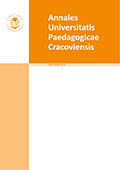Absolute and Abstract Spaces: the Sea, the City and Class Divisions in Thrity Umrigar’s The Space Between Us
Absolute and Abstract Spaces: the Sea, the City and Class Divisions in Thrity Umrigar’s The Space Between Us
Author(s): Maria Concepción Brito VeraSubject(s): Studies of Literature
Published by: Wydawnictwo Uniwersytetu Komisji Edukacji Narodowej w Krakowie
Keywords: City-space; Class divisions; Lefebvre; Thrity Umrigar
Summary/Abstract: Thrity Umrigar´s The Space Between Us (2005) can be understood as an exploration of class divisions and their distribution in the city-space of Mumbai. The work delves into intersections of gender and class through the relationship between upper-middle class Sera and her lower class servant Bhima, a character inspired by an actual servant Umrigar had as a child. The author recalls how the women in the family, mother, aunts and servant, shared the house chores in a sort of female community which was interrupted, however, by what the author termed “the elephant in the room”. This elephant was class which worked as a ritualized “space” that prevents a real encounter between Sera and Bhima. Inspired by Henri Lefebvre´s conception of space as active agent and passive object together with Edward Soja´s notion of spatial justice, my aim in this paper is to study that “elephant in the room”, that is, I intend to read Umrigar´s portrayal of class divisions from a spatial perspective.
Journal: Studia Anglica
- Issue Year: 222/2016
- Issue No: 6
- Page Range: 53-61
- Page Count: 9
- Language: English

